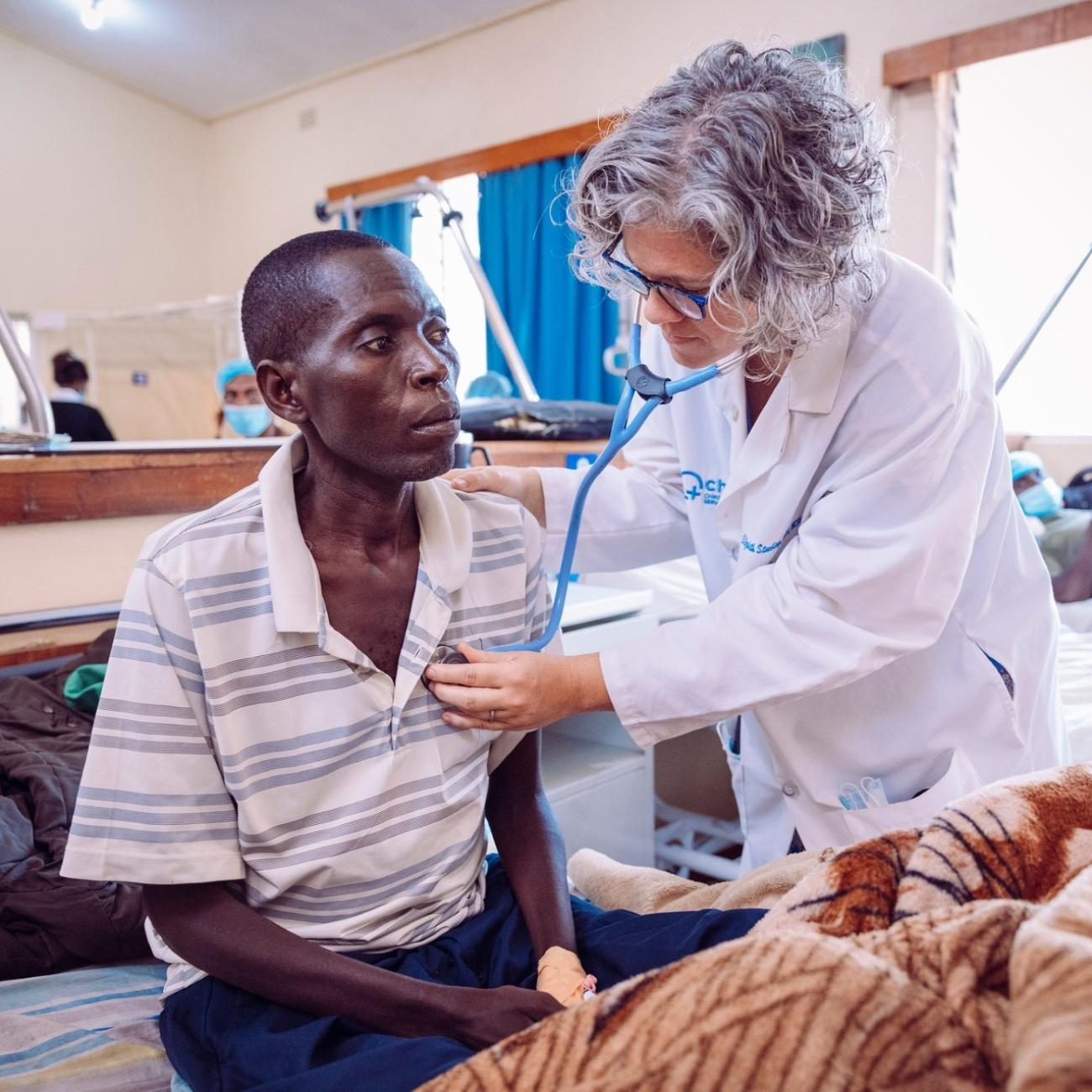The Idlib Specialized Surgical hospital in northwestern Syria has two beds where women give birth and offers about one hundred people reproductive services each day. Midwife and reproductive service health officer Halima al-Haj Ali began working there in 2021 while also making field visits to other understaffed hospitals and health centers in the area. Many of her fellow health workers had been killed in bombings or fled the country. Those who remained worked in fear and distress, reliant on grants and donated supplies to provide emergency and routine services to a high volume of patients.
Half of the region’s 4.7 million people had been internally displaced, and of those around 70 percent were living in temporary accommodations. Since 2015, a UN Security Council resolution had allowed the area to receive cross-border humanitarian relief, but the flow had been unstable and insufficient. The border crossing at Bab al-Hawa, the only access point, had only been reauthorized until July 2023.
Some 70 percent of Syria’s internally displaced people live in temporary accommodations
Then, beginning on February 6, a series of earthquakes hit Turkey and Syria. The immediate disaster killed more than fifty thousand people and injured tens of thousands more. In Syria, according to the United Nations, nearly six thousand people died and more than ten thousand were injured. An estimated thirty thousand people were displaced in northwest Syria alone. Even people with intact homes were fearful of going inside because the structures might collapse.
In wealthy countries, a disaster of this magnitude stresses health-care resources and personnel. In war-torn Syria, where the health system was already fragile, these compounding public health crises have been nothing short of catastrophic.
For several days following the earthquake, the only border crossing remained closed and the region was inaccessible for external humanitarian workers. Three border crossings have since opened and started operating but are only authorized until May 2023, and supplies coming through don’t meet the need even now.
Consider that an estimated 150,000 women in the areas affected by the earthquake are pregnant, of whom more than five thousand are likely to experience complications that require emergency obstetric care, including C-sections.
Twelve years of armed conflict and earthquakes had already hindered the provision of sexual and reproductive health services in the region. According to a recent report by a consortium of international aid and human rights organizations, attacks on health facilities were sufficiently frequent that many pregnant women preferred giving birth via a cesarean section rather than vaginally in order to reduce the time they spent inside a hospital. Others who traveled long distances to give birth ended up going into labor en route to the hospital, putting both the women and their newborns at greater risk of harm. Women in remote areas skipped visits with clinicians during their pregnancies, missing out on services that might make for a safer delivery.
Now, additional public health challenges threaten to make everything even worse, including a recent cholera outbreak that demanded health workers go door-to-door and tent-to-tent to spot cases and spread awareness about the disease.
“The medical staff is exhausted and extremely tired, yet are holding themselves to ensure serving their patients, while suffering from lack of supplies and advanced medical equipment,” al-Haj Ali told us shortly after the first earthquake struck. But “the international community is not recognizing us, including those who have been tirelessly offering help.”
Stable access for humanitarian aid is needed in Syria to respond to all these crises. The region needs permanent, expanded international access points. It also needs continuous cross-border operations, including reformed UN operations and other non-UN mechanisms to sustain humanitarian aid.
Some supplies have been moved in cross-line operations—from government-held parts of the country into non-government-controlled territory – but they are no substitute for international, cross-border operations. In addition to pledging $6.45 billion in aid for Turkey, the international community recently pledged more than $1 billion for Syria, but aid for the country is still scarce, politically driven, and is no substitute for longer-term solutions. The global community must overcome the politicization of humanitarian aid and ensure that aid flows are sustained.
Clinicians like al-Haj Ali are treating patients amidst war and destruction, through pandemic and under threat, with limited resources and coordination. If she can face this much adversity, the international community must show solidarity by stabilizing and expanding life-saving access to international aid.


